New Yorkers are known to disagree about a lot of things. Who’s got the best pizza? What’s the fastest subway route? Yankees or Mets?
But all 8.5 million New Yorkers are likely to agree on one thing: Penn Station sucks.
There is nothing joyful about Penn Station. It is windowless, airless, and crowded. 650,000 people suffer through Penn Station on a their daily commute — more traffic than all of three the New York area’s major airport hubs combined.
Hatred of Penn Station manifests itself in popular culture; in Broad City, Abbi Jacobson’s character gets dumped because her boyfriend would rather end their relationship than enter Penn.
Though Penn Station is a drab, low-ceilinged rat maze of a station, it used to be the opposite. It was vast, light-filled, and gorgeous.
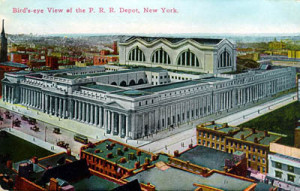
The building was the fourth largest building in the world when it was finished.
The original Penn Station in New York City opened in 1910. It was majestic. Travelers would enter through an exterior façade of massive Doric columns. Inside was a grand staircase into a waiting room not unlike a Roman temple. It was a Parthenon for trains.
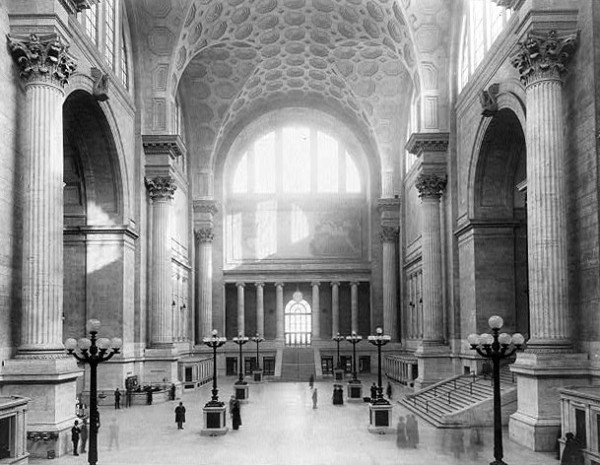
The old Penn Station was the brainchild of Alexander Cassatt, head of the Pennsylvania Railroad. For Cassatt, Penn Station would fix a problem that had plagued New York for years — getting between Manhattan from New Jersey. At the time, passengers could only get across the Hudson River via ferry. Cassatt built the first ever train tunnel to run underneath the Hudson River, which was considered one of the greatest engineering feats of all time.
The grandeur of Penn Station would thus crown his monumental achievement.
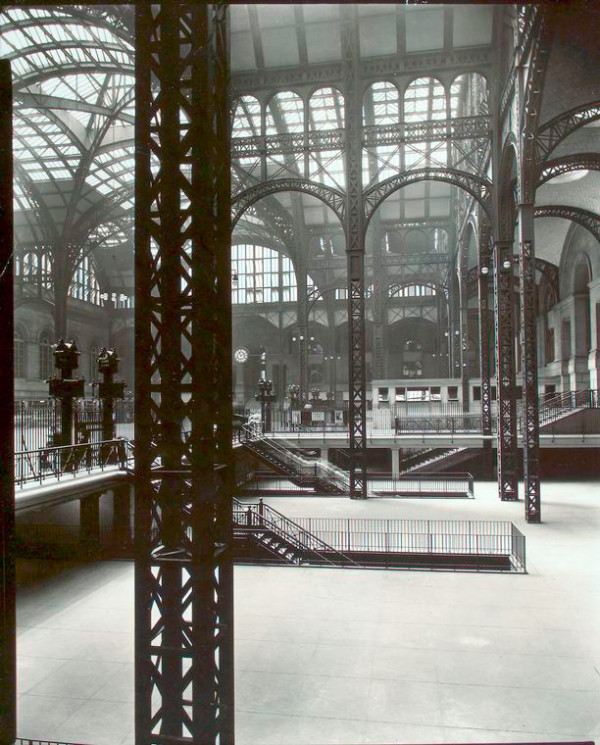

Newspapers called Penn Station the 8th wonder of the world. Everyone loved it.
Everyone, that is, except for one other railroad family that owned another station across town.
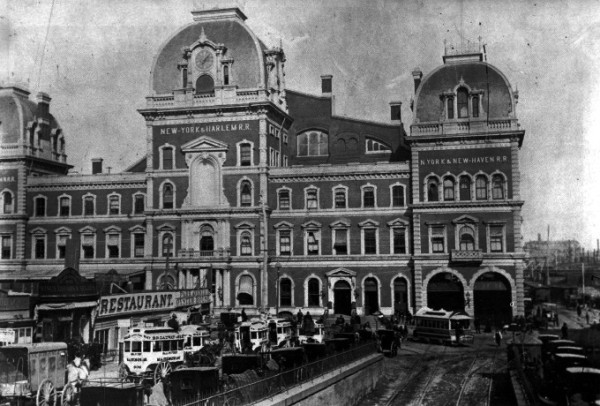
The Vanderbilt family owned Grand Central Station, which was not anywhere near as “grand” as it is now. Not wanting to be outdone by the beauty and grandiosity of Penn Station, the Vanderbilts tore down their Grand Central and built a newer, shiner, Beaux Arts-style Grand Central Terminal. This is the one we know today.
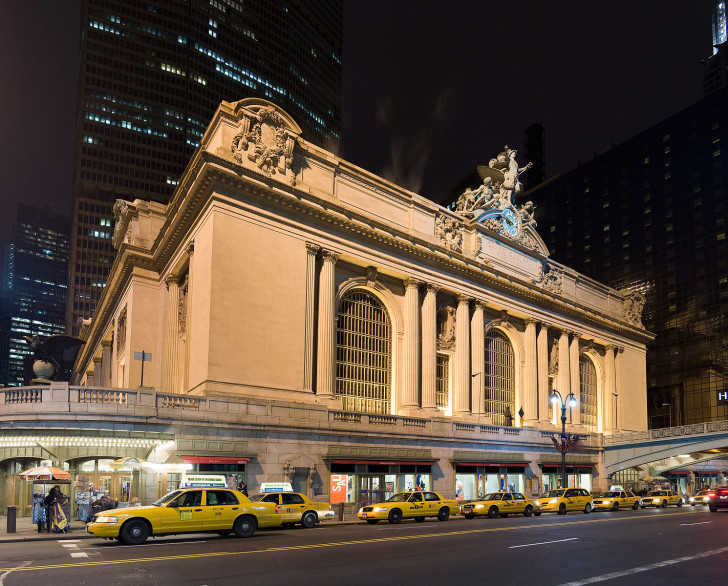
Penn Station was only 40 years old at this point, but already its days were already numbered. After World War II, passenger trains just weren’t as popular anymore. The Pennsylvania Railroad Company couldn’t afford the upkeep of Penn Station’s grandeur. Its glory gave way to grime.
Pennsylvania Railroad executives knew that they could profit if they could rent out the space above the station to a big, tall building. There were proposals to build parking garages, amphitheaters, and a 40-story office tower. But the one that won out was the futuristic sports and entertainment palace — Madison Square Garden.
A deal was struck: Pennsylvania Railroad would keep the train tracks in place, and sell the air rights above them. Penn Station would be demolished in the process.
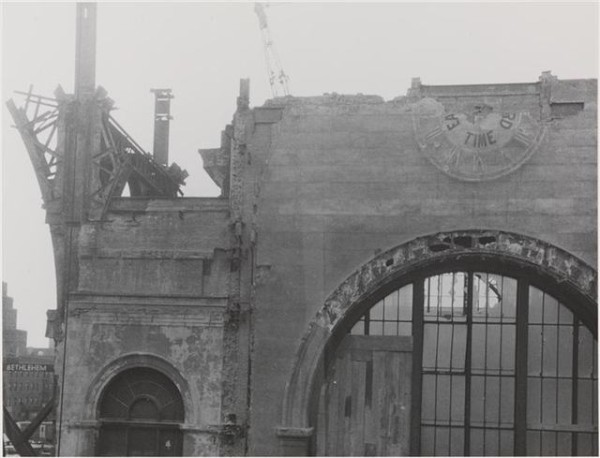
The only New Yorkers who seemed to care about the destruction of Penn Station was a small group of activist architects who called themselves AGBANY — the “Action Group for Better Architecture in New York.”
On August 2, 1962, two hundred architects marched up and down 7th Avenue shouting slogans like “Polish, don’t demolish!” and “Save our Heritage!” The men wore suits, the women wore white gloves and pearl, the lettering on their signs was impeccable. But demolition continued on schedule.
A year later, on October 28, 1963, jackhammers tore into Penn Station’s granite slabs. The demolition took about three years. By 1966, most of Penn Station’s remains — the Doric columns, the granite and travertine details — had been dumped in a New Jersey swamp.
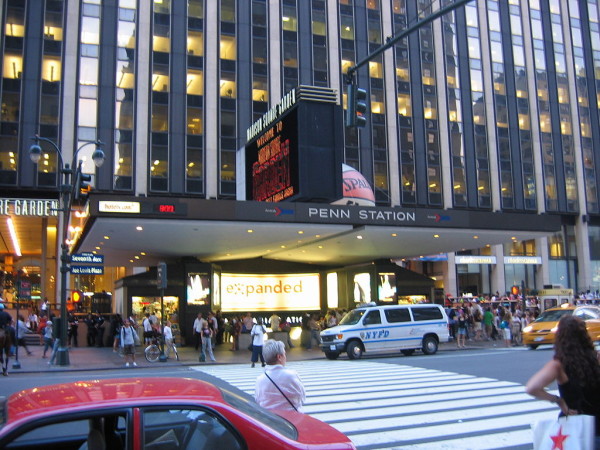
The new Penn Station was summarily hated by everyone. In 1968, architectural historian Vincent J. Scully famously remarked that where as before, “One entered the city like a god; one scuttles in now like a rat.”
After the destruction of Penn Station, Mayor Robert Wagner created the first Landmarks Preservation Commission. In 1965, the group helped pass the city’s first ever Landmarks laws so that something as drastic as the destruction of Penn Station, never happened again. The Landmarks Laws passed unanimously.
But the Landmark Laws didn’t have teeth. They didn’t protect anything inside a building, or scenic parks. Most problematically, they didn’t meet very often — they gathered only six months per three-year period. When they were out of session, the bull dozer and wrecking ball operated at will.
Many historic buildings continued to fall even after the Landmark Laws were passed. Among the victims were the Singer Building, once the tallest building in the world; the old Metropolitan Opera House; and Radio Row, an entire business district which was razed to make way for World Trade Center.
And in 1968, Penn Station’s old rival, Grand Central Terminal was slated to join this list.

But then it got a celebrity endorsement: Jacqueline Kennedy Onassis.
With Jackie O. so prominently involved, the fight went from a New York battle to a national one. The case went to the Supreme Court, and on June 26, 1978, the Supreme Court ruled in favor of New York City’s Landmark Law.
Justice William Brennen wrote of Grand Central’s architecture: “Such examples are not so plentiful in New York City that we can afford to lose any of the few we have. And we must preserve them in a meaningful way.”
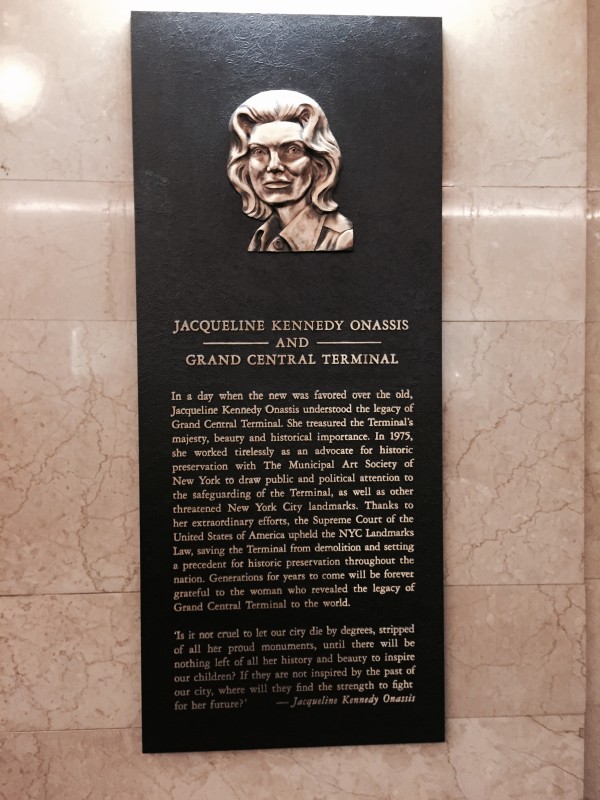
Correction: The official name of the current Grand Central structure is Grand Central Terminal, not Grand Central Station.
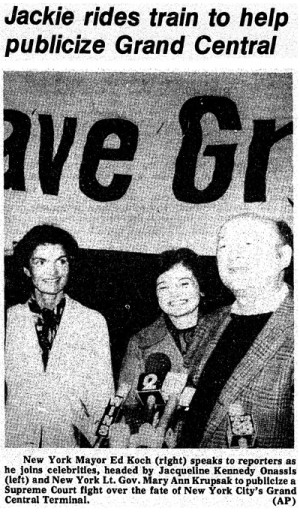



Comments (20)
Share
A small part of Penn Station still lives on as the center piece of the Eagle Scout memorial fountain in Kansas City, MO
http://kcparks.org/fountain/eagle-scout-memorial-fountain-2/
It’s annoying to hear Grand Central Terminal, repeatedly and incorrectly referred to in the episode as Grand Central Station.
As a tourist arriving from the UK via Newark, entering Manhattan for the first time by train through Penn Station is actually quite amazing as NYC is hidden from view until you emerge into a full size film set, eyes wide open like a child falling out the back of a dark Narnian Wardrobe, its amazing! You should see some of our ageing stations in the UK …then you will know what depressing is!
More about the dumping of Penn Station in NJ. There are some places along the Hackensack you can still find the pink stones.
http://www.northjersey.com/community-news/penn-station-found-in-the-meadows-1.364783?page=all
Would love to hear a story about Buffalo Central Terminal, too!
Roman and team, great episode! I am a biking tour guide of Central park and a student of architecture history (so a dream job, on a bike). I share the tragic story of Penn Station every time we stop at the Onassis Reservoir, renamed in her honor as another great victory in Manhattan for the landmarks commission (she helped saved the reservoir right around the same time as Grand Central) However, ever since about a year and a half ago. the story got a little brighter. Madison Square Garden’s lease is up as of 2022. And, plans were submitted to rebuild it, in fact it was a competition! You can find the schemes here:
http://www.mas.org/urbanplanning/new-penn-station-2/
There are some amazing photos of the original Penn Station on Shorpy.com. you can see them here. http://www.shorpy.com/search/node/penn+station . Some of them aren’t the NYC Penn Station so just read the descriptions.
Ditto on the aggravation of the Terminal/Station mixup. Grand Central Station is the subway station under Grand Central Terminal. (Kent Barwick got it right, though!) More generally, I was surprised to see how little the episode added to the conventional narrative–not usually the case. And, c’mon, can’t we find anyone less predictable than Roberta Brandes Gratz on this subject? Sorry to carp, but this episode seemed way under par to me.
Right now Moynihan Station could be a showcase of how we advance a major transportation hub in NYC. But, Gov Cuomo has his incompetent cronies at Empire State Development on the project. See how well the Atlantic Yards is working out…
“One entered the city like a god; one scuttles in now like a rat.” I like that. But then I’d always thought of New York City as something of a giant rat’s nest. Especially the Wall Street area.
I was surprised to hear in the podcast Grand Central referred to as Grand Central Station (which is the subway station), especially from a supposed lover of Grand Central Terminal.
Yup! Big apologies. It was my mistake. I blame it on too many oysters at the Oyster Bar. Grand Central Terminal for life!
The episode also didn’t do much in terms of analysis or the inevitable ambiguity with this story. I agree, Penn Station today is unbearable however it’s painting with some massive brushstrokes on Grand Central terminal. This includes the construction of the terminal. Many factors led to the decision to get rid of the station and replace it with the current structure. Moreover, it’s incredibly important to consider as well the impact Grand Central had on the city and the entire east side whereas Penn Station, even during the years of glamorous railroad travel, doesn’t even justify a comparison there.
Well just some rather pointless griping and at least it could get non-nyc listeners who aren’t quite as pedantic about the terminal/station error (ie people who aren’t me) thinking about preservation in general.
The demolition of the original Penn Station was a tragic loss for New York City architecture. The Penn Station we in use today is dingy and depressing.
However the surrounding neighborhoods contain noteworthy buildings. Some of the loft buildings offer cool former manufacturing space with brick walls, high ceilings and over sized windows. The area has become a mecca for tenants seek architecturally interesting spaces, with tech firms, media companies, architects and other creative tenants attracted to the Penn Station/Garment District neighborhoods. http://bit.ly/11clUF4
I am very sad that this story presented preservation as an unambiguous good. Sometimes tearing something down and building something new is the best thing to do. The preservation laws you say are not strong enough are being used to prevent new construction in huge swaths of NYC.
Maybe one day you can do a story on totally unremarkable buildings that are categorized as landmarks, or what it does to a city to have housing supply so constrained.
http://www.city-journal.org/2010/20_2_preservation-follies.html
I found this website that you can use to listen to 99% Invisible: http://99invisible.radioserie.com/
What really sucks is how many typos and errors there are in this. I can’t even see it as a credible article. If I was Julia Barton, I wouldn’t have wanted credit for this.
Sorry, Cheney, I only edited the audio not the copy. However, other than a few extraneous spaces and a misplaced modifier, I don’t see much that’s offensive. Can you enlighten us?
The North River Tunnels to Penn Station were not the first train tunnels under the Hudson River. The Uptown and Downtown Hudson Tubes – both now the PATH train – were opened to revenue service in 1908 and 1909, respectively. The North River Tunnels did not open to service until 1910.
Great documentary that highlights old Penn Station: https://www.youtube.com/watch?v=j7ekAlHQy-g